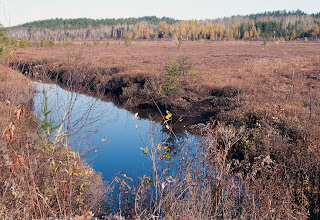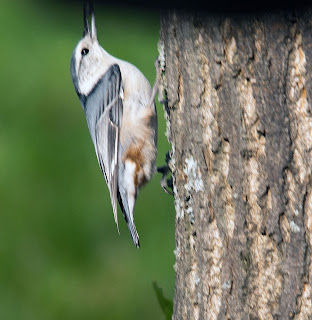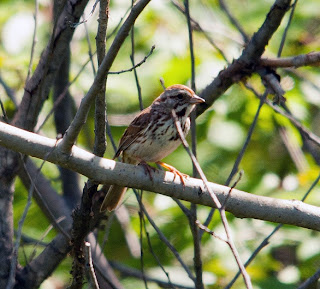 |
| Winter Photo |
All dogs are descended from the Gray Wolf, but Alaskan Malamutes are unique in that they were not European bred, but were bred by the Inuit some 3 thousand years ago. Inuit are the descends of mongols who moved east into the Artic lands. Horses, of course, were useless, so some other animal was required. The early Inuits stole wolf cubs from the wolf dens, breeding those pups who were friendly to humans, and amendable to training. Continual selection based on service and friendliness bred the modern Malamutes. The selective breeding stopped there. There is no miniature or lap dog offshoots, as there are of European dogs. All potential Malamute owners should be aware of their Wolfie traits. They are pack dogs, and that pack includes their human family and they're dedicated to that family, and want to be part of it. So if you like winter, they'll pull you on cross country skies, or sled with you but don't ignore them. You have to be a strong leader with them, because they have an independent streak. If the ice is soft, they'll automatically turn the sled to safe ice. The males are excellent child rearers, just as they are in the wolf pack. As far as guarding goes forget it, but threaten the pack and these guys fight to the death, literally. They're not barkers, but do they talk. One more thing, they shed like crazy. Their undercoat is a short wool without the lanolin, and can be mixed with sheep's wool.
If you follow this blog, you know I had a fairly heavy accident, in which I shattered my hip, broke my shoulder, and dislocated my jaw. I had just had Boom a short time, and was worried that I would have to give him up, but a wonderful young friend took Boom, whose name is Cindy, and trained him to the haltie leash, that rig, that Boomer wears. He was trained to walk me with no pulling and a heel that keeps him far enough from me that I don't trip. For a solid year while I did therapy, he walked me. Unheard of for a Malamute. I'm pretty mobile now, but the haltie is a symbol of Boom's intelligence and devotion. Now we're both retired, and spend all our time together.
For more information on Alaskan Malamutes, see Dorris Heffron's City Of Wolves. It is a historical novel in a Yukon setting, but the research she did for it is contained in the book. Heffron also headed the commission on BC's sled dog shootings that resulted in changed legislation. She became intersted in Malamutes when she acquired her first Malamute, Yukon Sally. For more information on dog's intelligence, eye sight etc see" Ideas "@ cbc.ca ,public radio in Canada, and their dog series. Any general dog comments pertain to working dogs as I've never had a toy dog. P.S. I forgot to add. They love to hug!!
































































